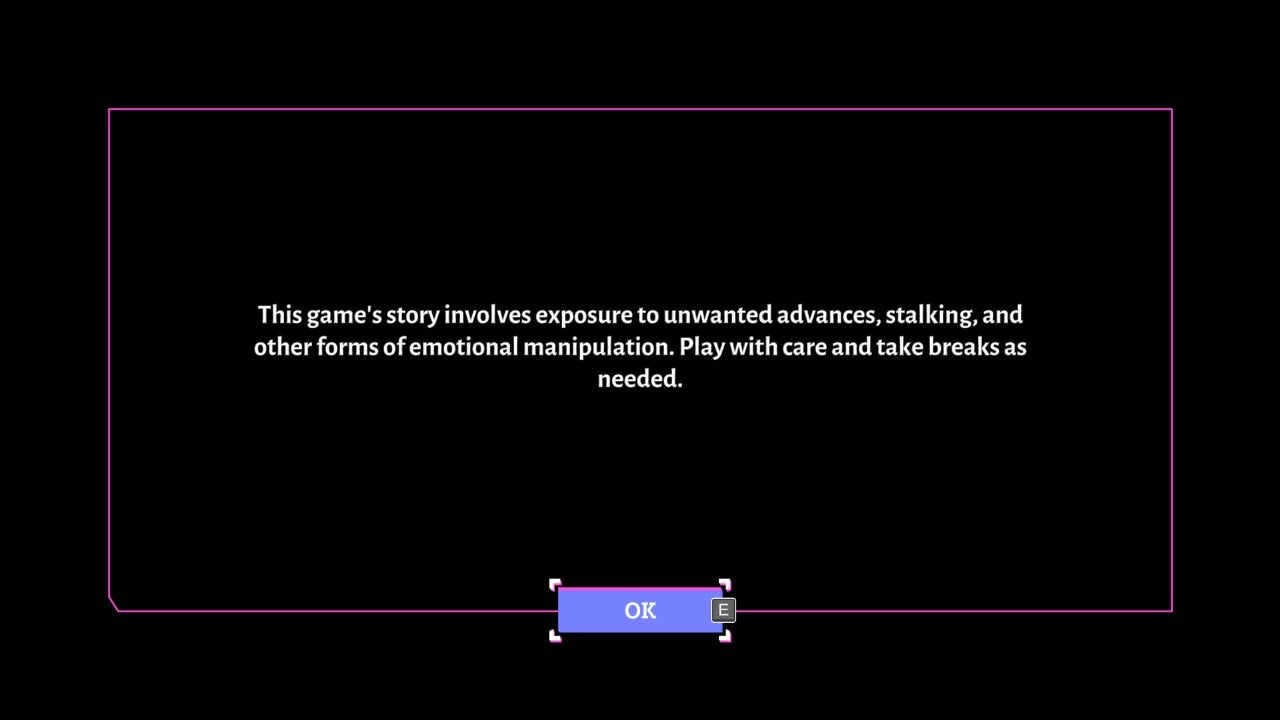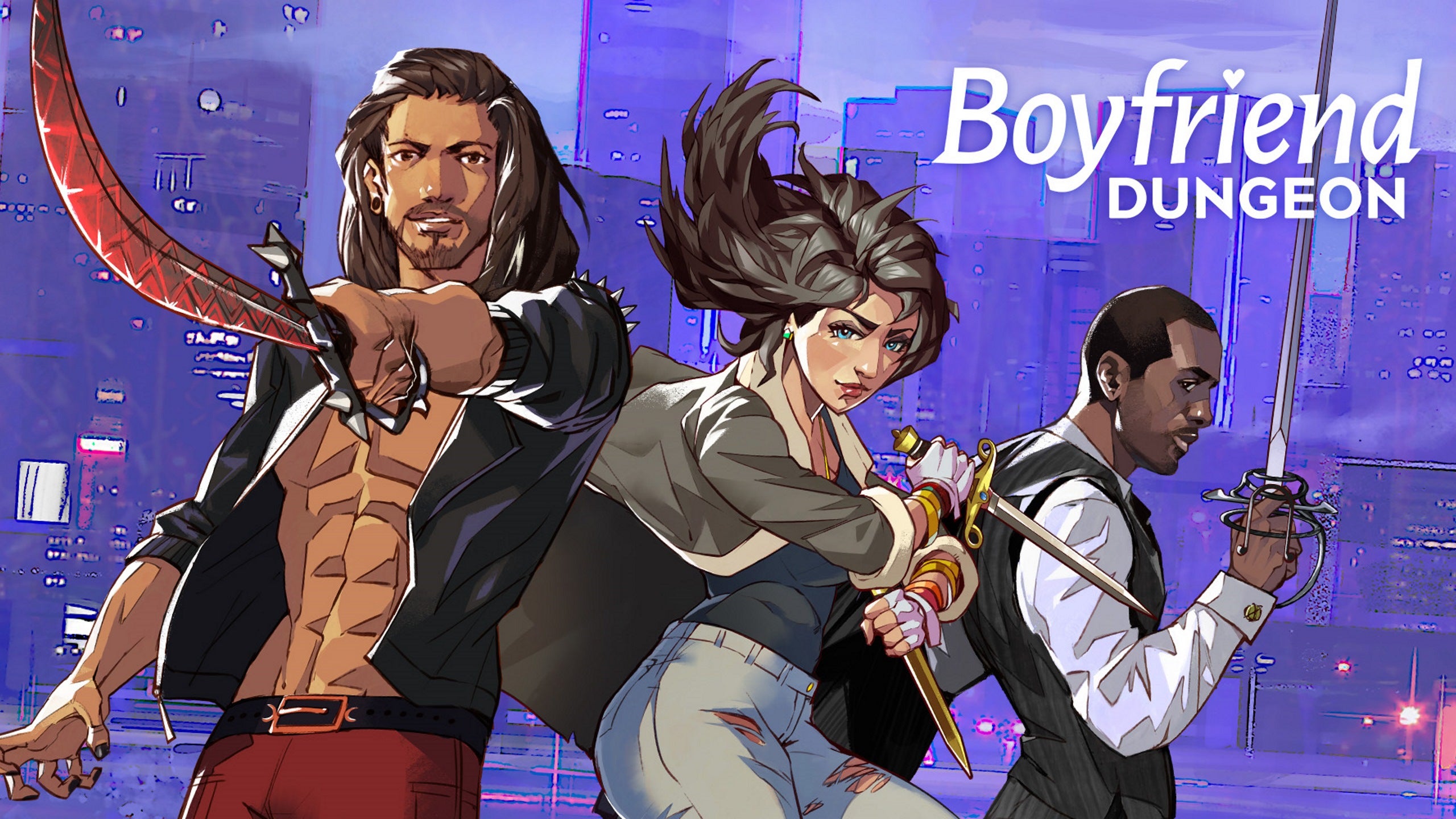Products You May Like
As always, the video game discourse has been raging on social media, and as is tradition the discussion has alternated between fascianting and downright exhausting – but it has raised interesting questions about the content of games, and how developers present that content to players.
For those who wisely spent the last week away from Twitter and comment sections, here’s what happened: Newly-released indie title, Boyfriend Dungeon, has been causing a stir.
Part dating sim, part dungeon crawler, it features a range of characters you can date and get to know – including one in particular who is less-than-savory. This character leans into themes that might be stressful or unpleasant for some players – stalking, unwanted advances, emotional manipulation, obsession – and some people are upset that this is a major component of a game that has looked like a breezy, fun dating sim in much of its marketing.
For its part, developer Kitfox Games has tried hard to be considerate in delivering these elements of its story. The game opens with the warning “This game may include references to unwanted advances, stalking, and other forms of emotional manipulation. Play with care.” This is on top of other thoughtful design touches such as including the option to turn off in-game text messages from the protagonist’s mother.
It’s fair to say that in the case of the content warning, it was inadequate and should’ve been better. The word “May” does some pretty heavy lifting in that statement, since the stalker character’s relationship and emotional manipulation cannot be avoided, and is in fact an absolutely core pillar for Boyfriend Dungeon’s narrative. Kitfox has done the right thing, updating the warning to make the nature of the content clearer. That patch is already out in English, while it’s incoming for other languages also. That’s good stuff.
We’ve updated Boyfriend Dungeon on Steam and Epic (itchio coming soon) with an updated content warning and a few other fixes.
Read the full update here: https://t.co/IzJHwo3kot pic.twitter.com/uscQkxkQUO
— Kitfox Games 🦊 BOYFRIEND DUNGEON OUT NOW (@KitfoxGames) August 17, 2021
A second cry has risen up in relation to this, however: a plea for Kitfox Games to allow that character to be turned off entirely. This is where the campaign loses me, especially when a lot of this attitude seems to involve dogpiling developers and even sending hatred the way of the voice actor who plays the character.
Here’s where I’m at. I’m a strong believer in the concept that video games are indeed art. Art is created by artists – and artists have a right to exert control over what their work ultimately is. Quality content warnings need to be in place so that the end user can consent to being exposed to whatever themes are present in a game (or film, book, show, or any other form of art) in an informed manner. I’m all for content warnings being more explicit – by being detailed and extensive, or perhaps by having a more general warning that points to an official webpage packed with full, spoilerific and context-filled detail. But beyond this, the developers, as artists, have a right to tell the story they want to.
The offending elements of Boyfriend Dungeon aren’t something that can be excised or toggled out without severely impacting the story about dating Kitfox appears to wish to tell. It is a game that is inherently about weathering and overcoming the bad, horrible elements of dating as much as it is enjoying the lovely stuff – and Eric, the stalker, is key to that. In many ways, he is the anchor of that story.

Because games are an interactive medium, it’s always easy to jump to an interactive solution to problems like this. In this case, that’d be dropping in a toggle that’d allow users uncomfortable with the Eric storyline to still experience the other elements of Boyfriend Dungeon. And if that’s what the developers want to do, if they see that as fitting with their vision, that’s fine — but if it isn’t, we players should appreciate and accept that.
In making art that tackles difficult topics and unfortunate subject matter, it inevitably means that some people aren’t gonna be comfortable with the end result. But that’s part and parcel of being art, right?
If the problematic element is integral to the experience a game like Boyfriend Dungeon aims to give, it means some people will be excluded. The artist has to make peace with that, and so does the audience. By demanding that every game has a sanitized option, we risk stripping the developers – the artists – of their autonomy.
Worse, it is the sort of request that, if normalized, could be used against diversity and inclusiveness by the usual bad faith actors – used to strip out important portrayals of difficult topics, or turn developers off attempting to cover them to begin with. I want games, especially those from marginalized people, to feel empowered to explore difficult topics.
The issue of games and content warnings isn’t new, but it is an important and growing debate. I think about other recent games I love with difficult themes. Persona 5 is an incredible game, but it also jumps into the deep end with depictions of abuse of minors and attempted suicide right from the off. I just reviewed new puzzle-thriller Twelve Minutes, which at a point takes a hard turn into content certain to make some players deeply uncomfortable. There are no warnings – probably because a warning would immediately ruin the twist.

Then there’s Bugsnax, a game marketed with a cute head-bopping song that also happens to revolve around a brutal, macabre twist. There was little complaint about these – though I think a debate could be had about the need for content warnings versus a developer’s ability to surprise. How many films have content warnings of this kind built into the actual experience, rather than just communicated through extracurricular media? That’s an interesting debate, and a worthwhile one the industry needs to embrace.
Ultimately, it is important to do as much as is sensible to protect players from nasty surprises that may distress them – and that’s what content warnings are for. A bit of debate about what is acceptable to depict is great, too – art exists not just to entertain, but to prompt conversation. But asking developers to excise content crucial to the story they wish to tell is where I draw the line.
Not all games can be for everyone. Sometimes, something will put you off. That might be something trivial like a bad character design or a voiceover you can’t stand – and sometimes it’ll be something serious and raw, like a game tackling an issue you aren’t comfortable exploring in an interactive medium.
We definitely need to campaign for better and more thoughtful content warnings across the board – but let’s not try to force games to neuter their themes. We have to accept that sometimes, some players will have to skip some experiences – but in an industry with a diverse range of games made by players from many walks of life, there’ll be plenty for everyone to play. That’s the future I want to see.
